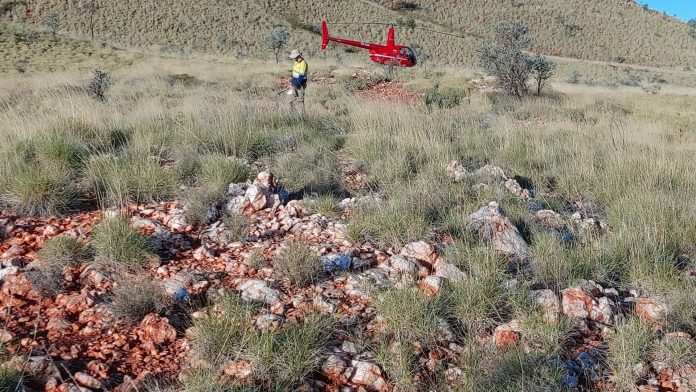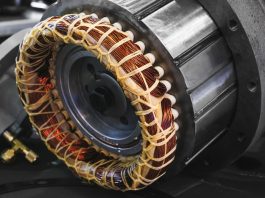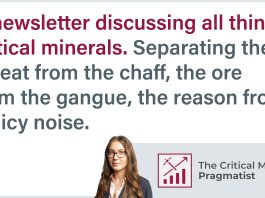Todd Axford, Managing Director and CEO of Fuse Minerals, details the company’s plans to focus on underexplored areas of Australia to discover minerals needed to meet the world’s decarbonisation goals.
Fuse Minerals is an Australian exploration company focused on discovering mineral resources to support our future economy. The company currently has several prospective projects in copper, gold, silver, lead, and zinc—Mt Sydney and Mt Sandiman in Western Australia and three copper/gold projects located in the Isaac region of Central Queensland.
To learn more about Fuse Minerals’ values as a company, as well as its progress so far and future plans, The Innovation Platform spoke to Managing Director and CEO Todd Axford.
Can you outline the key objectives of your company strategy and how they set Fuse Minerals apart from other exploration companies?
Our strategy was born out of observing the industry in Australia and acknowledging the world’s decarbonisation goals, creating a need for mineral deposit discoveries across a range of traditional and newer commodities. We are looking to implement a sustainable approach centred around being a supplier of mineral discoveries to established miners. Copper and associated metals are our initial focus.
The key objectives of Fuse Minerals’ strategy are:
• To be a discoverer of the mineral deposits that the world’s established mining companies will need to supply humanity’s needs in the 21st century.
• To minimise shareholder dilution.
• To provide returns to our shareholders via both capital growth and monetisation of our exploration successes.
To achieve these objectives, we need the right project areas, the right people and an ability to do deals and partner with established miners.
When it comes to project area selection, we look at mineral system fundamentals. Does the area have a source for metals? What are the pathways to get those near surface? Is the geology capable of trapping mineralisation and are those settings preserved? We combine this with Jon Hronsky’s Exploration Search Space Concept, which recognises deposits are finite – once discovered, they are not replaced and can’t be discovered again.
In any given search space, the first explorer has all deposits available to be found which affords them a higher likelihood of success. In mature search spaces, there are less deposits left to discover. We are targeting project areas showing potential to have all mineral system fundamentals that are immature, leading to higher discovery potential.
Through past experience working in the mineral exploration sector in Australia, we recognised four key things:
• When all explorers are pooled together, their rate of discovery is low, in fact many never make any sort of discovery.
• Those who are more successful typically have robust in-house technical skills.
• If listed on a stock exchange, decisions are often swayed toward what’s popular for investors and there is a general spiralling down of value through consecutive capital raises (dilution and brokers raising money at discounts to trading price).
• Miners are less successful at new discovery but great at expanding existing discoveries and taking discoveries through study and approval phases.
We also note that most explorers who do achieve a discovery try unsuccessfully to pivot to become a mining company. Completing feasibility studies, announcing attractive net present values (NPVs) and internal rates of return (IRRs) paired with a huge capital requirement and lack of balance sheet strength to achieve funding. Chalice Mining Limited in Australia demonstrates the challenge. They had great success with the discovery of the Gonneville deposit in Western Australia, and hopefully they can find a way to access the circa A$2bn of capital needed to build the mine.
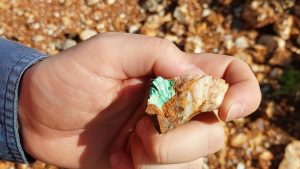
We are not one of hundreds of juniors trying to ride the hot commodity waves to deliver share price growth or falling over after completing feasibility studies. We want to break new ground, prove potential for large-scale discovery in underexplored areas, and feed the need of the established miners to secure the resources they will be mining into the future.
Who leads the Fuse Minerals team? How does the team’s combined experience contribute to your strategic goals?
Our strategy focuses on leveraging a highly-skilled technical team with strong connections to established mining companies. This team needs to identify and establish new projects with the potential to host large deposits of commodities essential in the 21st century. We can then conduct quality technical work aimed at proving the significant resource potential of these projects. If we can achieve that and technical results support the presence of large new mineral resources, these projects will be attractive to those bigger established miners, allowing us to seek farm-in funding to advance discoveries or sell the projects while retaining a royalty on future production.
Our team boasts extensive experience in mineral exploration, led by myself, a geologist with nearly 30 years of experience as MD/CEO. I am supported by two seasoned geologists – Stephen Pearson, who serves on our board of directors, and Thomas Bartschi, our Exploration Manager.
Achieving success on the ground is just one part of our strategy. Engaging with established miners is key to our monetisation plans. To facilitate this, our board is led by Warren Mundine AO, a former president of the Australian Labor Party with extensive experience working with major Australian resource companies. Joining him is Vern Tidy, a former partner at EY in Perth, who also chaired Avanco Resources before its acquisition by Oz Minerals in a A$418m deal in 2018. Together, Warren and Vern bring valuable experience and connections, positioning us to engage with some of the largest players in the mining industry.
Fuse Minerals is set to explore its Mt Sydney Project. What are the key exploration targets and potential mineral discoveries that Fuse Minerals aims to achieve through its drilling programme at Mt Sydney?
Previously, a number of established miners reviewed our Mt Sydney Project. They noted promising geological fundamentals and discovery potential but require positive drill results to meet their internal investment criteria. With our recent private fundraising complete, we are ready to drill.
Our Mt Sydney Project, located on the eastern margin of the Pilbara Craton and adjacent Paterson Province in Western Australia, aligns with our strategy. The region hosts world-class deposits including Woodie Woodie (Mn), Nifty (Cu), Telfer (Au/Cu) and Havieron (Au/Cu), and our project combines essential mineral systems fundamentals with a lack of exploration. Covering 1,119km², the project had seen minimal exploration before we began our work in 2021, with only 1,106m drilled by previous explorers. Over the past two years, our work has identified six promising prospects for drill testing.
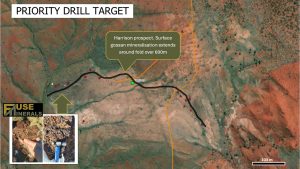
We are preparing to undertake the third drilling programme ever conducted, targeting areas with demonstrated potential for copper, nickel, silver, lead, and zinc. We plan reverse circulation (RC) drilling of four prospects, two of which—Harrison and Bull—show particularly exciting surface mineralisation.
Harrison is a Volcanic Hosted Massive Sulphide (VHMS) prospect with potential extending over 1.5km. VHMS deposits are typically high-grade in copper and zinc and may also contain significant amounts of silver, lead, and gold.
Bull features brecciated and mineralised quartz with high-grade polymetallic assays from rock chip samples, including up to 21.10% copper, 27.20% lead, 0.43% zinc, and 640 g/t silver. The surface expression of Bull spans over 200m and is up to 20m wide in places. As our independent geologist noted on-site: “If the surface indications at Bull are mirrored in the drilling, this could be our first deposit.”
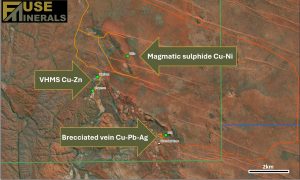
The remaining prospects to be drilled, Smith and Osborne, are subsurface targets supported by geophysical data and anomalous surface geochemistry.
We also have an exciting Magmatic Cu-Ni Sulphide target in the Wills Prospect. The geophysical modelling indicates the target is 300-400m below surface and out of reach of RC drilling.
Our ultimate goal is a new deposit discovery, which propels the company forward. Through drilling, we aim to gain a clearer understanding of the subsurface geology and intersect significant mineralisation. If our ideas are correct, the drill results could attract both investors and those established miners, signalling successful progress in implementing our strategy.
Why does mineral exploration present such a promising opportunity? Can you explain the implications of successful mineral exploration in addressing global challenges?
Many years ago, in Australia there was a bumper sticker that read: ‘What’s mined is yours and what’s yours is mined.’ The message being: Almost everything we rely on as modern humans would not exist without the mining of natural resources. Whether you live in the first, second, or third world, access to mineral resources to mine is essential to our quality of lives.
Mineral resources need to be discovered via exploration – they are finite things and, once mined, they do not regenerate. As we move into the future, our known mineral resources will be depleted. The world’s decarbonisation initiative is triggering increased demand outlooks for a whole spectrum of minerals and metals. When combined with natural depletion and increased demand, it will be critical for the world to have new mineral resources discovered.
In part, the exploration opportunity was created when in the late 1990s the big mining companies in Australia started to move away from exploration. Instead, they focused on acquisition as a means to cost-effectively replenish and grow their resource bases. Discovery via exploration was too expensive. Their business structures and processes are not optimised to facilitate efficient mineral discoveries, but they are running out of new deposits to buy.
Successful exploration requires free thinking, and nimbleness combined with access to funding. So, with miners being good at mining and capable of funding new mine development, there is a great opportunity for well-functioning explorers to deliver new discoveries to these companies at a time when they are wondering where they will be mining in decades to come.
As the world moves into a period of significant demand growth for minerals and metals, new discoveries will be critical to not just the growth plans of established mining companies but to humanity as a whole. Successful exploration is needed not just to facilitate decarbonisation but simply to maintain, and hopefully improve, our standards of living as we live through the 21st century.
What’s next for Fuse Minerals?
While we have a longer-term strategy, at this point our focus is very much on the short-term delivery of a successful drilling programme at Mt Sydney as the foundation to move forward.
We expect to have a reasonable indication of the success at the time of drilling our holes, as a lot of the mineralisation we are targeting can be identified visually. Samples will also be dispatched to the laboratory for quantitative analysis, which is usually a four-week turnaround.
Following the drilling, we plan to advance our strategy and reconnect with the established mining companies who evaluated Mt Sydney last year.
The private funding we have raised is enough to deliver the drill programme and cover near-term overheads and operating costs. So, upon completion of the drilling, we will be looking at another capital raise.
When it comes to raising further capital, the board has a decision to make regarding pursuing a listing on the ASX (for which a lot of the groundwork has already been completed) or remaining as an unlisted entity. There are positives and negatives of both approaches. The decision will be guided by the quality of the drill results, the desire of our existing shareholders, any interest from strategic investors, and the state of the IPO and micro-cap market.
We are hopeful that, leading in to 2025, we will remain well funded, complete a deal to advance Mt Sydney, get on the ground at the Eastern Isaac Project in Central Queensland where there is great potential for new copper-silver-gold discoveries, and remain supported by an educated and committed investor base.
Ultimately, mineral discovery success will drive significant growth for Fuse Minerals, opening up options for the company while contributing to the world’s need to discover the deposits that will become the mines of the future.
Please note, this article will also appear in the 19th edition of our quarterly publication.

